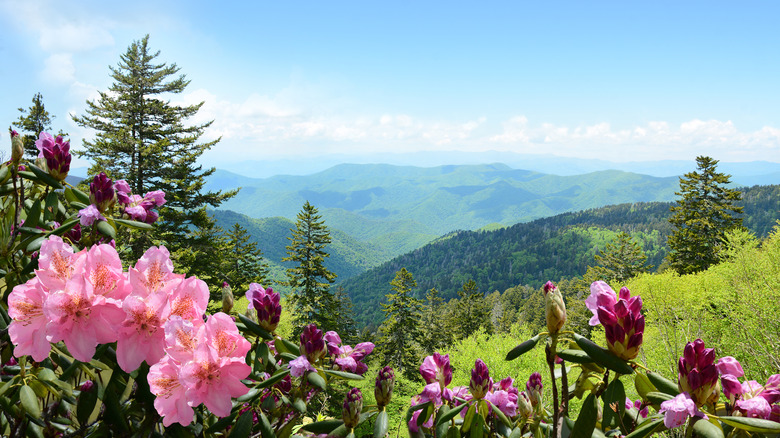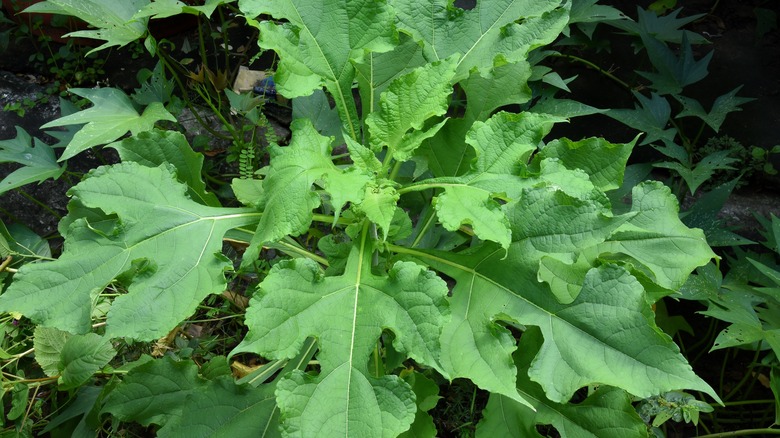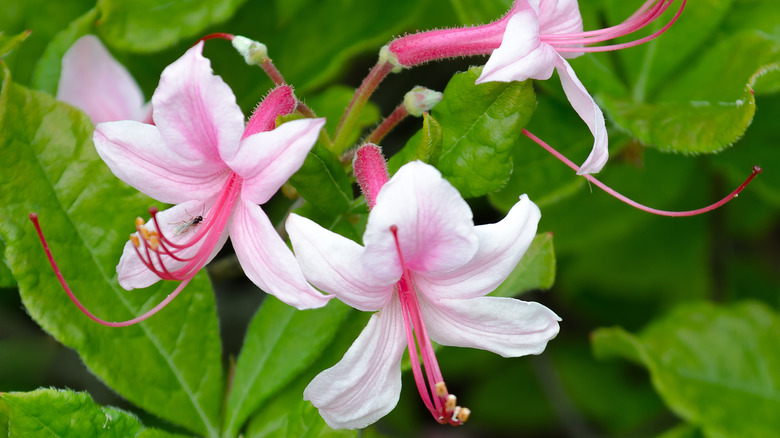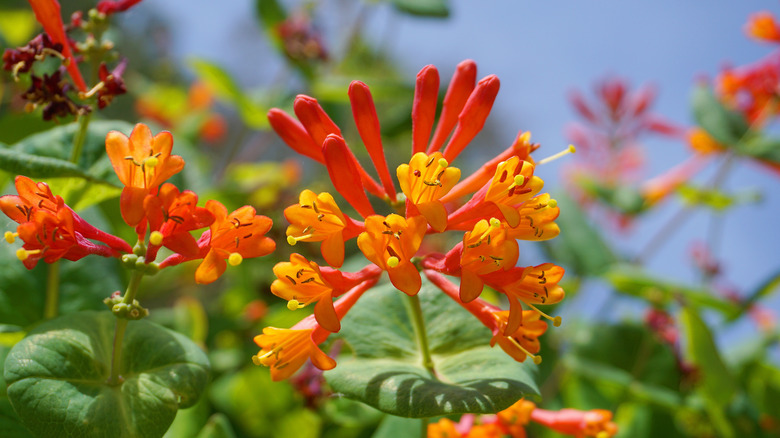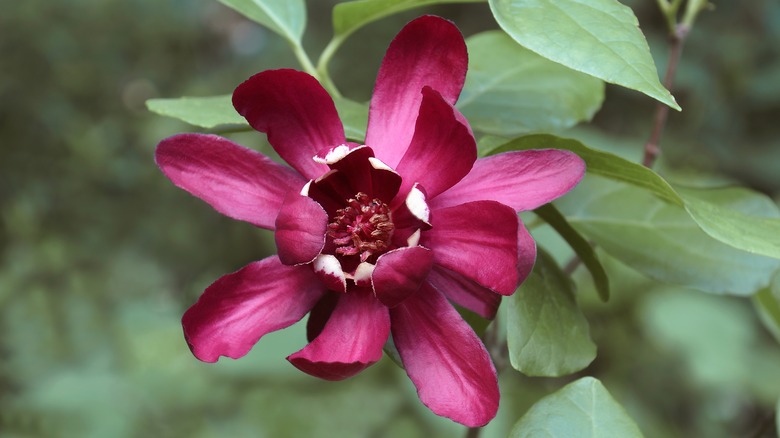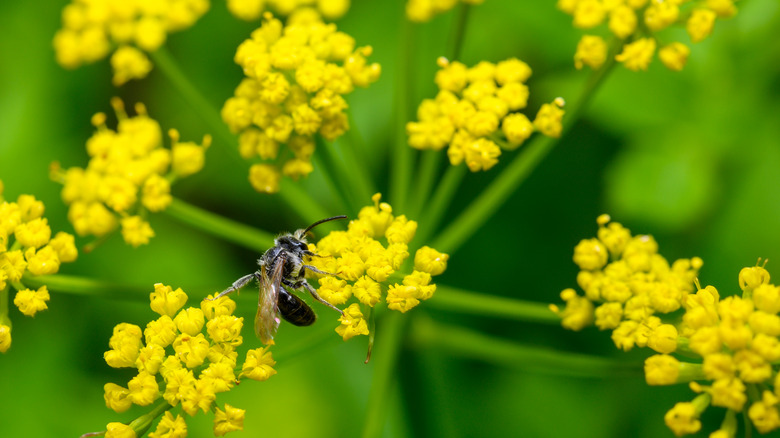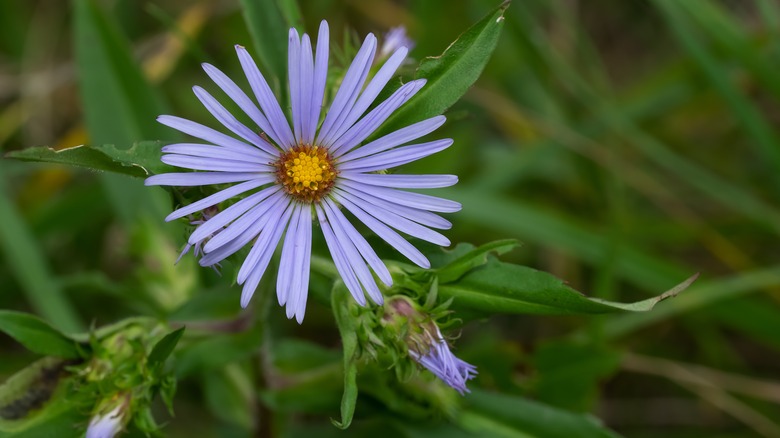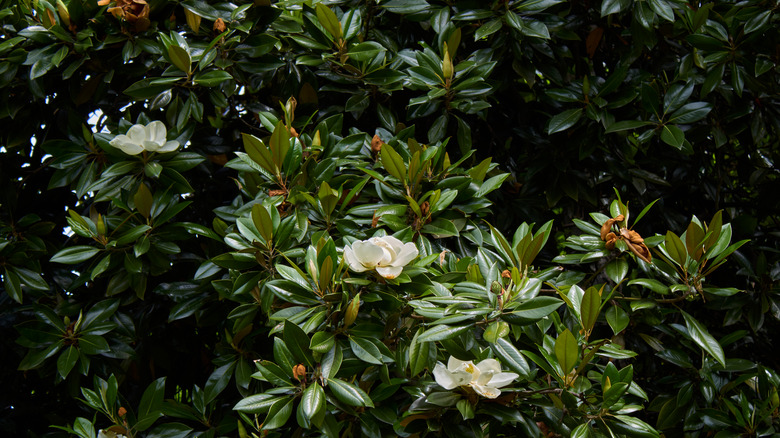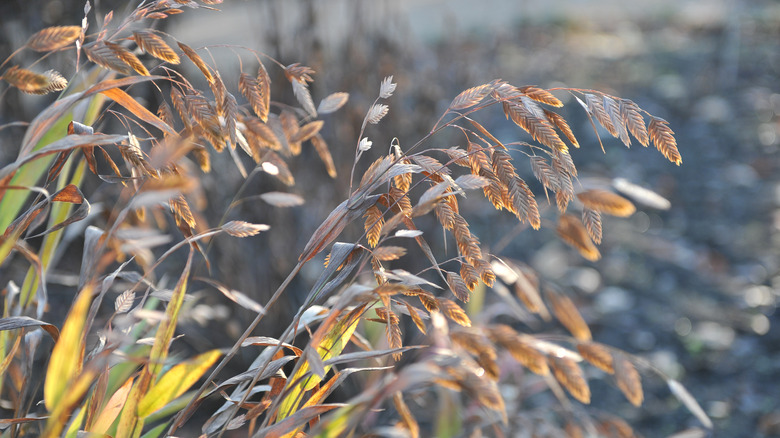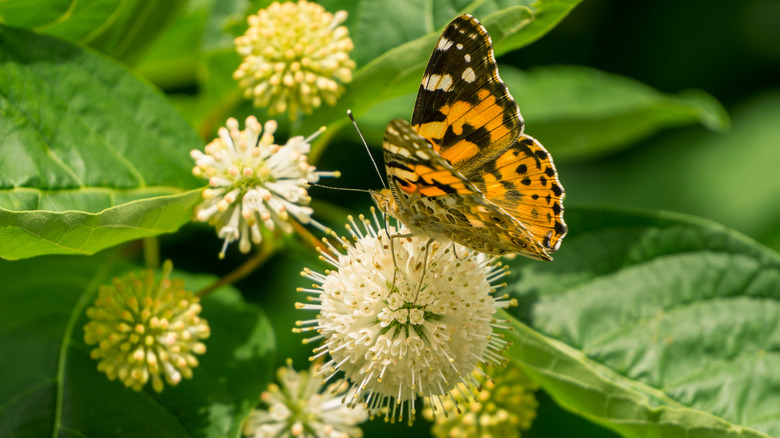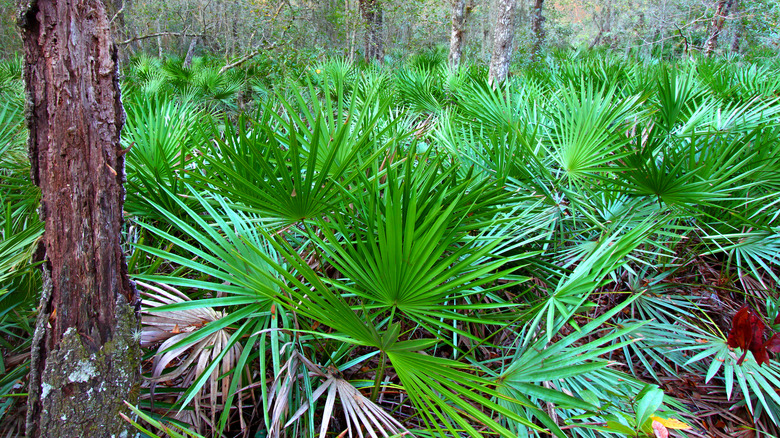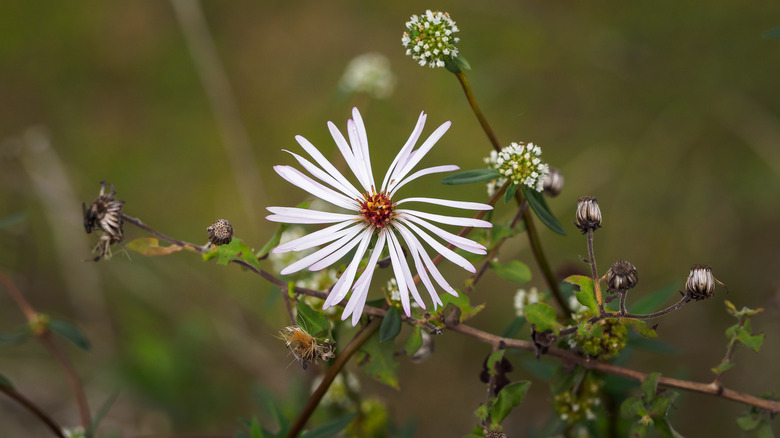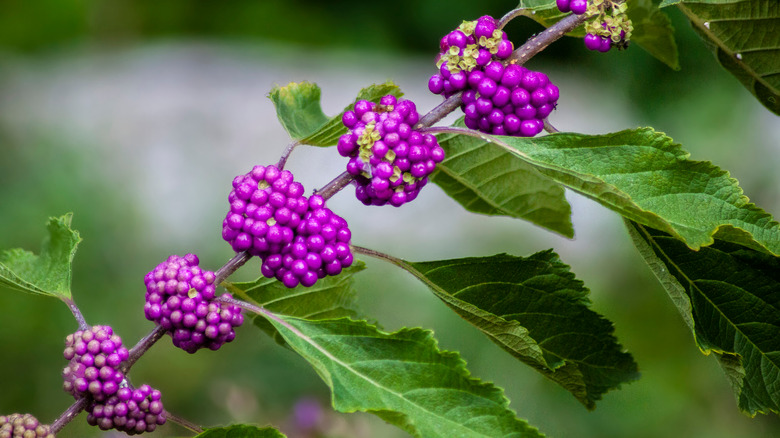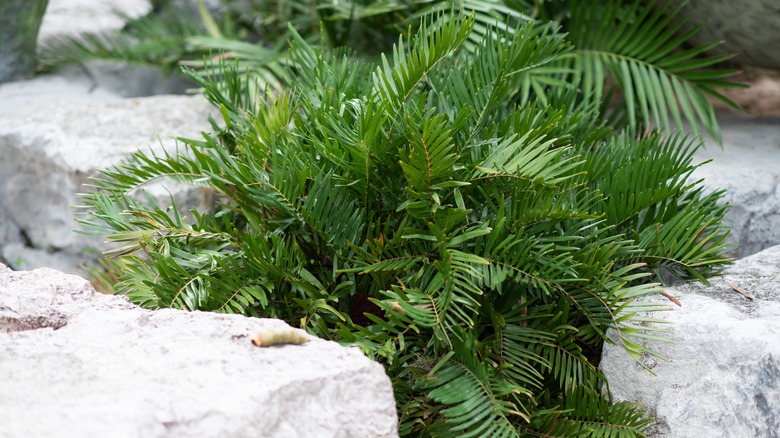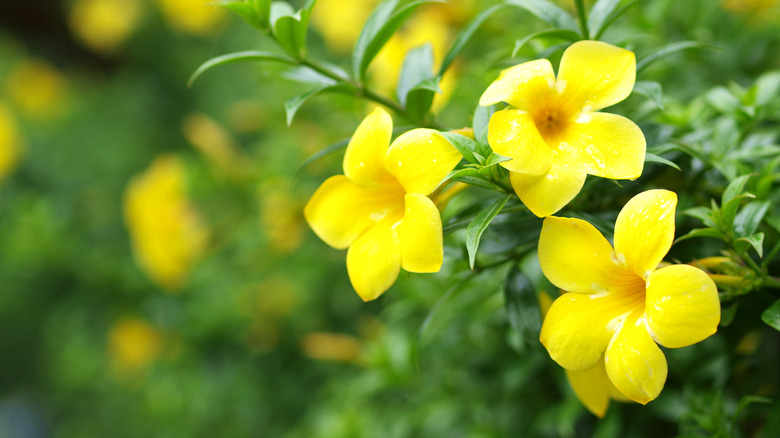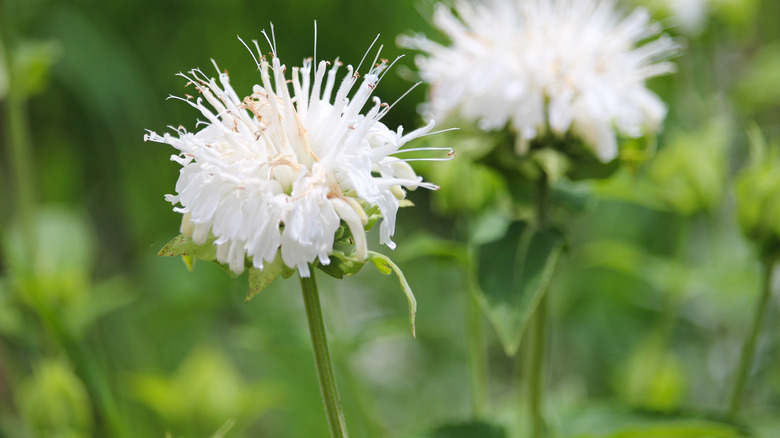15 Best Native Plants To Grow If You Live In The Southeast
Gardens in the southeastern part of the United States are some of the most beautiful and profusely blooming in the nation. These plots of soil receive consistent sunlight and rainfall as well as the perfect balance of heat and humidity that gorgeous foliage-filled or flowering species love. Growing a sustainable native garden in the Southeast can happen easily when you are looking for the best plants to cultivate in your area. Local bees, hummingbirds, butterflies, and other beneficial insects find their way into these natural paradises, as described by North Carolina State Extension, and the gardener is left with little to do but prune here and there and enjoy their work.
If you want to start your own gorgeous native garden and you live in the Southeast, you can grow a wide range of trees, flowers, shrubs, and edible plants with some planning. In no time, they will fill your yard with stunning colors, and once those plants are established, pat yourself on the back and let Mother Nature do most of the work for you. If that sounds like something you want to do, take a look at this collection for some ideas on getting started.
1. Yellow flower leafcup
Yellow flower leafcup (Smallanthus uvedalia), or bear's foot, is an herbaceous perennial that is native to the southeastern United States. The Florida Wildflower Foundation notes that the plant has bright yellow blooms, and its large green leaves resemble a bear's paw. Unfortunately, the yellow flower leafcup has become a rarer sight in its natural range, and other similar species are now endangered.
Bloom Season: Summer
USDA Growing Zone: 6 to 9
Growing Conditions: Partial sun
Soil Type: Well-draining
Size: 3 to 5 feet tall
2. Mountain azalea
Mountain azalea (Rhododendron canescens) is a pink-blooming shrub growing up to 15 feet tall. Typically, it is grown somewhat long as a shrub border in warmer regions. However, as per Missouri Botanical Garden, smaller cultivars work great in mixed borders. To keep your plant happy, make sure to set it up in rich, well-draining soil and try not to expose it to harsh afternoon sunlight.
Bloom Season: Spring
USDA Growing Zone: 5 to 9
Growing Conditions: Partial shade
Soil Type: Organic, humusy, rich, and well-draining
Size: 6 to 15 feet tall and 6 to 12 feet wide
3. Coral honeysuckle
Coral honeysuckle (Lonicera sempervirens) is a vining flower known to climb fences, trellises, and walls. It will scale more than 20 feet tall if it is exposed to full sunlight and bloom profusely for a few months. Still, according to the Lady Bird Johnson Wildflower Center, it is not an aggressive plant and attracts pollinators such as butterflies and hummingbirds.
Bloom Season: Spring and summer
USDA Growing Zone: 6 to 9
Growing Conditions: Full sun to partial shade
Soil Type: Rich and well-draining
Size: 15 to 20 feet tall
4. Sweetshrub
The sweetshrub (Calycanthus floridus) gets its name from the sweet scent that it emits when it is in bloom. Thankfully, the plant flowers for a good amount of time, and it has the potential to rebloom when cared for properly. Proven Winners suggests planting your sweetshrub in average soil and a sunny or partly sunny area.
Bloom Season: Spring and summer
USDA Growing Zone: 4 to 9
Growing Conditions: Full sun to partial shade
Soil Type: Average and well-draining
Size: 6 feet tall and 4 to 5 feet wide
5. Golden Alexanders
Golden Alexanders (Zizia aurea) is a popular plant among Southeastern species. A low-growing perennial, this flower has small yellow blossoms that only stand up to 2 feet high. It is an extraordinarily adaptable cultivar, so gardeners don't have to watch it too closely. Instead, plant it nearby other spring bloomers such as blue false indigo, columbine, and Canada anemone for a gorgeous welcoming garden, as recommended by Prairie Nursery.
Bloom Season: Spring
USDA Growing Zone: 3 to 8
Growing Conditions: Full sun to partial shade
Soil Type: Evenly moist and well-draining
Size: 1 to 2 feet tall
6. Elliott's aster
If you've lived in the Southeast for some time, you've probably noticed Elliott's aster (Symphyotrichum elliottii) in roadside ditches, swamps, and wet flatlands. This purple flower grows in moist and sandy soil, where it can become weedy due to its aggressive suckers, as told by the Florida Wildflower Foundation. Still, it can make a good addition to a native pollinator garden because it attracts bees and other beneficial insects.
Bloom Season: Fall
USDA Growing Zone: 8 to 11
Growing Conditions: Full sun
Soil Type: Moist and sandy
Size: More than 4 feet tall
7. Southern magnolia
Southern magnolias (Magnolia grandiflora) are popular, tall-growing tree species in the South. They can be identified by their dark green foliage and white blooms that appear in the spring, Missouri Botanical Garden states. These flowers are fragrant and typically 8 to 12 inches in diameter.
Bloom Season: Spring
USDA Growing Zone: 7 to 9
Growing Conditions: Full sun to partial shade
Soil Type: Evenly moist, rich, and well-draining
Size: 60 to 80 feet tall and 30 to 50 feet wide
8. Inland sea oats
Inland sea oats (Chasmanthium latifolium) are native to a few different regions in the United States, but they are commonly found growing in areas with poor drainage near streams and water gardens. As noted by the College of Agriculture, Forestry and Life Sciences, this species can be very beneficial to wildlife and insects when planted correctly.
Bloom Season: Summer and fall
USDA Growing Zone: 3 to 8
Growing Conditions: Full sun to partial shade
Soil Type: Moist and acidic
Size: 2 to 5 feet tall and 1 to 3 feet wide
9. Buttonbush
The buttonbush (Cephalanthus occidentalis) is a shrub that is not only native to the southeastern United States but also to parts of Cuba, Canada, and Central America. Like many other warm-weather plants, the buttonbush enjoys moist soil and direct sunlight. With good care, it will produce scented blossoms in the summer while also attracting local mammals, birds, and insects, per North Carolina State Extension.
Bloom Season: Summer
USDA Growing Zone: 5 to 9
Growing Conditions: Full sun to partial shade
Soil Type: Rich and moist or wet
Size: 5 to 8 feet tall and 3 to 6 feet wide
10. Saw palmetto
An evergreen shrub, saw palmetto (Serenoa repens), is a popular garden plant chosen by Southeasterns living in the region's warmest parts. Florida Native Plant Society mentions that the plant can live for an extremely long time, and depending on the variety you decide to raise, it can grow very fast too.
Bloom Season: Spring and summer
USDA Growing Zone: 8 to 11
Growing Conditions: Full sun to partial shade
Soil Type: Loam or sand
Size: 3 to 8 feet tall and 4 to 6 feet wide
11. Climbing aster
Climbing asters (Ampelaster carolinianus) are a tall growing species in the Asteraceae or daisy family. They feature pink to purple flowers that form on vining 4- to 10-foot stems. A late bloomer, the climbing aster plant will normally show off its flowers at the end of summer. However, as North Carolina State Extension notes, you should deadhead them after fall for better blooming in the coming years.
Bloom Season: Summer and fall
USDA Growing Zone: 6 to 9
Growing Conditions: Full sun to partial shade
Soil Type: Moist clay or loam
Size: Taller than 10 feet
12. Beautyberry
The beautyberry bush (Callicarpa americana) is a species you are unlikely to know about unless you live in the Southeast. It has a weeping growth habit, and it is covered in bright green foliage and clusters of purple drupes in the late summer, explains the College of Agriculture, Forestry and Life Sciences. Before showing off its berries, it also produces blue, purple, or pink flowers.
Bloom Season: Summer
USDA Growing Zone: 7 to 11
Growing Conditions: Full sun, partial shade, or full shade
Soil Type: Slightly acidic clay, loam, or sand
Size: 3 to 5 feet tall and wide
13. Coontie
Coontie (Zamia integrifolia) is a somewhat rare and costly cultivar that is most often used as a specimen plant in Floridian yards. However, it is still native to the Southeast, and it can be grown in more areas as long as it receives proper care. The University of Florida suggests planting coontie in well-draining soil with some access to direct sunlight and little water.
Bloom Season: Does not bloom
USDA Growing Zone: 8 to 11
Growing Conditions: Full sun to partial shade
Soil Type: Well-draining
Size: 2 to 4 feet tall and 3 to 5 feet wide
14. Carolina jessamine
Carolina jessamine (Gelsemium sempervirens) is a type of vine that grows on roadsides and in open woodlands in the warmer parts of the United States. A relatively adaptable plant, Carolina jessamine can be encouraged to grow more than 20 feet long, or you can maintain it to a short length of just 3 feet, notes the Clemson Cooperative Extension.
Bloom Season: Spring
USDA Growing Zone: 6 to 9
Growing Conditions: Full sun to partial shade
Soil Type: Rich and well-draining
Size: 3 to 20 feet tall
15. Basil beebalm
Basil beebalm (Monarda clinopodia), which is also commonly known as basil bergamot and white bergamot, is an herbaceous perennial in the Lamiaceae family. Because of its place in the mint family, you might already expect that it has fragrant leaves and flowers. Though it is only mildly scented, it does have use in making delicious teas, according to North Carolina State Extension.
Bloom Season: Spring, summer, and fall
USDA Growing Zone: 5 to 8
Growing Conditions: Full sun to partial shade
Soil Type: Moist and well-draining
Size: 3 to 6 feet tall and 2 to 3 feet wide
